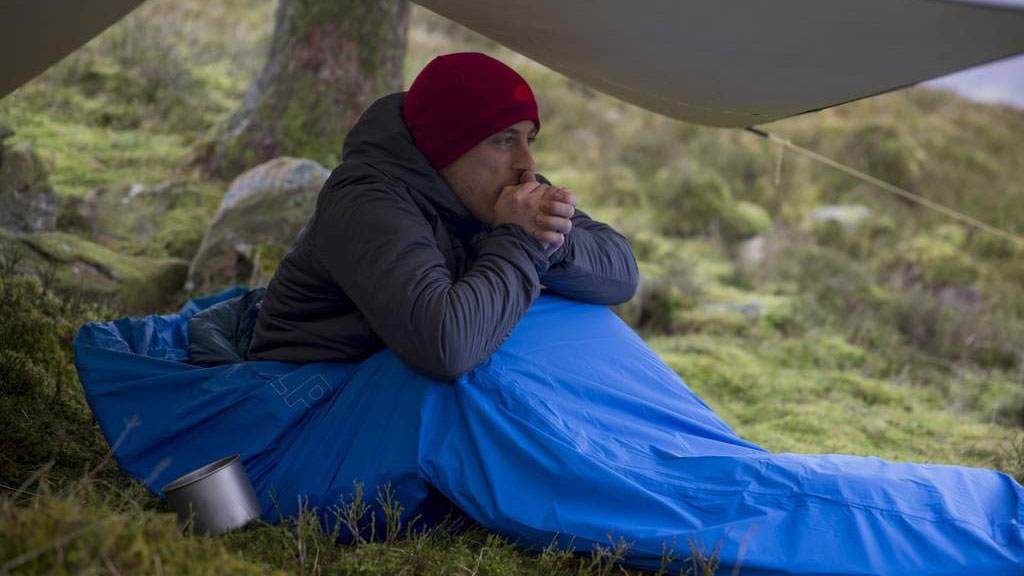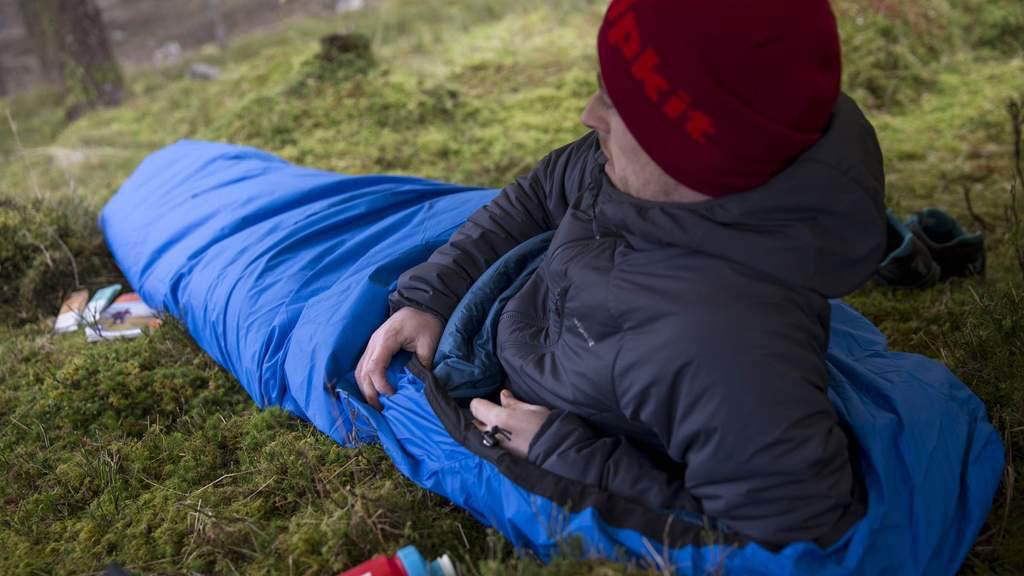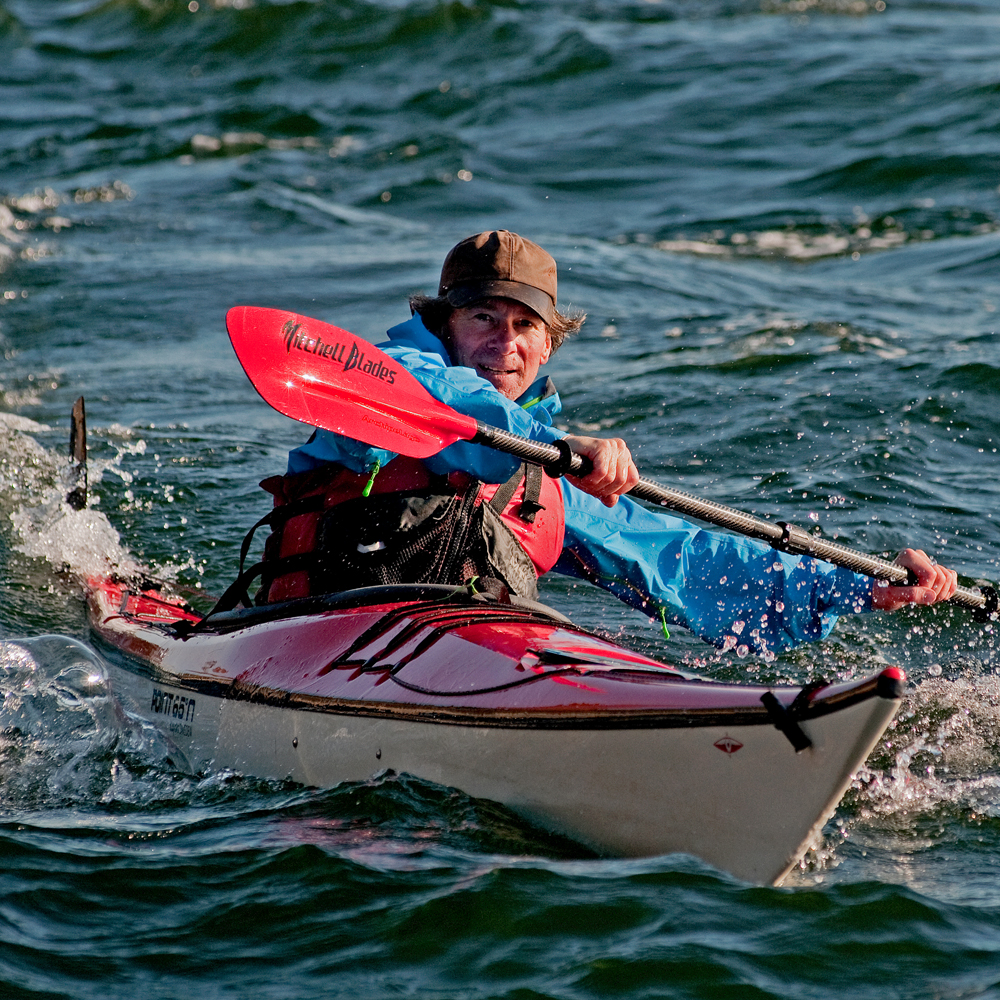One-person tent vs bivy sack: which is best for you?
When it comes to a one-person tent vs bivy sack, which is best for solo wild-camping forays? Developments in design and materials have closed the gap

One-person tent vs bivy sack used to be an easy choice. Decades ago, they were at the opposite ends of the spectrum in both weight and comfort. Bivy sack were basically huge orange plastic rubbish sacks; light, cheap, simple and so bedevilled by condensation that in anything but heavy rain you were better off sleeping outside the bag. Even the lightest tents, back then, were leadenly heavy but far more comfortable.
Since those days bivy sack have improved almost immeasurably, mainly through the use of breathable fabrics, which keep them light and simple but make them usable by more than masochists. One-person tents have got much lighter, though they are still more comfortable and, for the most part, more expensive. All this means that it's now possible to make a useful comparison between the two shelter systems.
- Best tents : the best shelter you can buy
- Best one-person tents: the most essential small tents on the market
- Camping checklist : don't head out without it
Most people are familiar with tents, but now might be the time to try bivy sack camping. The ideal situation is to have both in your quiver of kit, so you can choose the most appropriate for each adventure. Just bear in mind that they are very different ways of sleeping out.
Bivy basics

Despite all the modern materials, bivy sacks remain a simple concept; basically a bivy is a waterproof, breathable bag to go over your sleeping bag. You can throw one down anywhere and wiggle inside it to get shelter within seconds. Although, for an experience that goes beyond mere survival, and in weather any more testing than low-level summer sleep outs, carrying a lightweight tarp-poncho is worth the extra weight, as it allows you to erect a shelter over your head end, so you can sit up, eat, read and otherwise do more than lie-flat in a 'body bag'.
Hooped bivy bags were a bit of a break through in the 1980s, when I used one while cycling a thousand miles of dirt roads around Iceland in a month of rain. These provide a bit of space at the head end, though barely more than enough to prop oneself up on an elbow to eat or read. Nowadays hooped bivy bags make far less sense, when a modern tent can be as light (or lighter), far roomier and more weatherproof, though they still have their aficionados.
Tent talk
Like bivy bags, lightweight tents, still necessitate good campsite selection and honed outdoor skills. They also need more space – and time – to set up, but even the smallest then has room for a bit more than just lying down. In day after day of bad weather you'll get better sleep, keep kit drier and basically be able to keep functioning better in a small tent than you would if relying solely on a bivy sack for shelter.
A potential drawback of ultra lightweight tents – especially on extended or rugged trips - is that weight saving can mean sacrificing the robustness to cope with events; blogs by long distance hikers with lightweight tents often dwell on rips, broken poles or the like. A drawback when compared to the simplicity of a bivy sack is that, if they can't be erected as designed, few tents offer much scope for improvising shelter from their components.
Advnture Newsletter
All the latest inspiration, tips and guides to help you plan your next Advnture!
Function
A bivy sack is the most basic form of shelter, whether used as a simple throw-down-and-climb-in bed for the odd night, as a super-light option on extended trips, or a useful emergency back-up to have in your bag in case you face an unexpected night out. Bivy's are ideal for stealth camping; pick remote and hidden spots, lay down late and get up and move on early. When I have used campsites on long walks for showers and convenience I pack up the bivy sack and rest of the kit into my rucksack for the daylight hours and store it somewhere safe.
Tents at the ultra-light end of the spectrum were originally aimed at adventure racers and those pushing extremes on long trips, but the benefits of new materials, design and technology has fed into the light hiking category. Minimum functionality ensures a comfortable night in weather up the limit that the tent's designed for, though many people use experience to take ultra-light tents into climates and environments far beyond their design brief. All tents should have enough room for the occupant to lie out comfortably and move in their sleep a bit, and to sit up and perform basic tasks. If there's not enough room, then you're back in hooped bivy sack territory. A tent, however cramped, is very different option compared to waiting out a wet-day stuck in a bivy sack. Other pluses for tents are a bit more privacy and security for kit if you end up in a campsite or a fairly public area.
Design
A design brief for a bivy sack should prioritise simplicity; a breathable, waterproof bag, big enough to allow your sleeping bag to loft and not feel restrictive, and long enough to get well down inside in bad weather is ideal. Added features usually detract from the functionality; if you find yourself looking at hoops and pegs and extra space, then you might want a tent.
I find zip closures claustrophobic; pull over hoods with plenty of overlap over the mouth are better, especially if the hood is roomy enough to store and protect vulnerable gear from the wet. One bivy sack I've used, though heavy, does have a Velcro-sealed insect net across the hood and that has been useful.
The dimensions of a bivy sack are important, both in relation to your own size and to your needs; the more extreme the conditions you're likely to encounter the more comfort you'll gain from extra volume and length. Squeezing into a too-tight bag will compress the filling in your sleeping bag reducing its insulation, and it can be better to have an inflatable mat inside the bag rather than outside. Alpkit, for instance, do the Hunka in two sizes. I'm 5'11" and though I used their normal-sized one during a 750-mile walk around Japan, I would choose the XL in the future to have more room. Other manufacturers vary in their bag's dimensions and so need to be checked carefully against your own specifications.
Tents take more time to erect compared to just throwing a bivy on the ground, but practise can get tent put-ups to within a few minutes in most conditions. Nonetheless some designs are easier to erect than others. A shape to deflect wind and allow rain to run off is important. And the smaller the footprint – including the space for guy ropes – the more improvised campsites you can utilise. Some tents save weight by assuming that you have one or two trekking poles to use for support; factor that in if you don't normally carry poles.
Features
The less features on a bivvy bag the better in the opinion of most experienced users I've consulted, myself included. Closure of the mouth can be Velcro, zip, drawstring or in some cases a capacious overlapping hood. In most situations the only welcome extra feature can be a closable insect proof mesh panel across the bag's mouth. However, a small pocket near the opening to put a torch or other items you need to find easily in the dark can also be useful.
Some bags are constructed with a sturdier, fully waterproof but non-breathable bottom and a breathable upper; this can make them more robust and help water resistance on wet or rough ground. A loop tag on the top edge of the bag's mouth can be used to tie it up to a tree branch and get more airflow.
Bags come in all colours; if you're primarily going to be using one for low-impact and hide-away sleeping then green makes the most sense; if intended as a back-up or emergency shelter then a bright colour – red or orange – is better in a rescue situation.
Keep your bivvy bag simple and add versatility by carrying a light tarp or tarp-poncho as added shelter.
Tents are likely to be used for eating, reading and other non-sleeping activities, especially in bad weather and so can benefit from hooks to hold a torch overhead and kit pockets to keep essential items to hand.
The ability to pitch a tent flysheet first is better if likely to be done in rain or high winds, and a design that allows you to take and pitch just the flysheet without carrying the inner can save weight and add versatility. Well-placed vents help alleviate condensation.
Inner tents should be finest mesh or fabric and with zips to fully seal them against insects.
As with bivvy bags, choose a colour based on whether you want to be seen or would rather blend in. The latter – less visual pollution – is also a consideration when it comes to others' enjoyment of the outdoors.
Budget
You'll spend less on a bivvy bag and tarp system than on a tent, and there's a sweet spot above which you don't get many bivvy bag benefits for extra dosh. If you haven't bivvy camped before, consider buying one of the cheapest but still breathable bags (there are new and used military Gore-Tex bags on websites for around £30/$40) to try it out. Most experienced bivvy bag campers have worked their way up from the ubiquitous orange plastic bag via cheaper breathable bags to something top end.
On the other hand, quality in lightweight tents is usually cost-related. Understandably so, as there's greater complexity in the design and manufacture and more expensive materials. Do your research and then within reason pay the price for the tent that suits your needs; a tent that gets used a lot, and stands up to that use, is a better investment than something that gets left in the back of the cupboard (or worse, dumped in landfill).
Good and bad
The pluses of bivvy bags are cheapness, simplicity, versatility, the ability to roll one out and sleep anywhere, and lightness. They need a certain amount of know-how to use in bad weather or on long trips. Add in a tarp or a dual function poncho-tarp and you raise the functionality hugely, though you also up the weight penalty, as well as needing to learn new bushcraft skills. And in a bivvy, you're really sleeping 'outside' – that's the feeling that most bivvy bag campers count as one of their greatest attractions.
The minuses of bivvy bags are their restricted dimensions – they really are just a covering for your bag. They are claustrophobic when closed or sealed, and there's often condensation even with good breathable fabrics. They are challenging – or just plain depressing - if used day after day in poor or marginal weather. They can be hot and damp on warm nights, when breathability is compromised. There is no room to do anything bar – maybe – read; my go-to entertainment when trapped in a bivvy bag has been a small MP3 player with podcasts, otherwise it's suspended animation, torpor/coma. Getting in and out of the bivvy bag in bad weather can easily soak your clothes and your sleeping bag unless well managed.
Tents are a weatherproof and considerably more comfortable option if sited well, and offer enough roominess to at least sit up to read, eat and even change clothing in the dry. An insect proof inner tent can bring fabulous relief from mosquitoes and black fly in many locations, and you can keep most of your kit inside in the dry. A tent can form a base camp for day trips in and out.
On the downside, micro tents can only be pitched in one format and require reasonably flat ground and a far larger footprint area compared to a bivvy bag. They are still too small to cook in safely, and can be oppressively muggy in hot climates.
| Header Cell - Column 0 | One-person tent | Bivvy bag |
|---|---|---|
| Price | More expensive | Cheaper |
| Convenience | A little more complicated to set up, heavier and bulkier to pack and carry | Easy set up, can be used most places, smaller and lighter to pack and carry |
| Protection from the elements | Better protection | Some protection |
| Versatility | More functional | Basic functionality, not intended for prolonged use |
| Space | More space for your gear and to move around | Claustrophobic once zipped |
Verdict
If forced to choose, I would suggest going for the lightest, roomiest, simplest well-made bivvy bag to maximise the advantages of minimum weight, versatility, simplicity and cost. Then, as mentioned, it's well worth also investing in a lightweight tarp-poncho to extend the comfort level.
If trying to choose a one-man tent that can compete against a bivvy for convenience and weight you need tangible advantages: extra space, keeping out insects (a top reason in my view), good weather-beating design to keep you, your gear and especially your sleeping bag dry (meaning you can take a lighter down bag). The space to squeeze in another person if needed is another advantage over bivvy bags.
Both have their advantages, and disadvantages. If you've never tried lightweight camping then starting with a bivvy in unchallenging conditions – in terms of weather and terrain – can be done cheaply, and your skills and your kit extended if you find it works for you. For more than a night out in anything but good weather I would always carry a tarp to extend the possibilities for being comfortable.
You should always be able to extemporise some kind of reasonable night's sleep with a bivvy bag and basic bushcraft, but it can be challenging. But there's the unquenchable joy of simplicity. And they make a perfect lightweight back up for bothy trips or anywhere where you're intended shelter might be locked, full or not where you thought it was on the map.
If you have a particular trip or kind of walking in mind, a proven lightweight one-man tent suited to the conditions you expect can be far more comfortable, give you a better night's sleep, keep you warmer and allow you to eat, read, sit up and – importantly – dress and undress out of bad weather.
Ultimately, it's your adventure, and the decision is yours alone.
After a wild childhood in west Cork, Jasper Winn began embarking on long cycles, walks, horse journeys and kayak trips across five continents – adventures he’s decanted into books, magazine articles, radio and television documentaries. Keen on low-tech but good gear, Jasper is an advocate of slow adventures by paddle, pedal, saddle, boot and sail. He has circumnavigated Ireland by kayak and cycled across the Sahara. Twice. Having ridden north-to-south across Algeria he discovered the only way to get back was to turn round and pedal north again.

